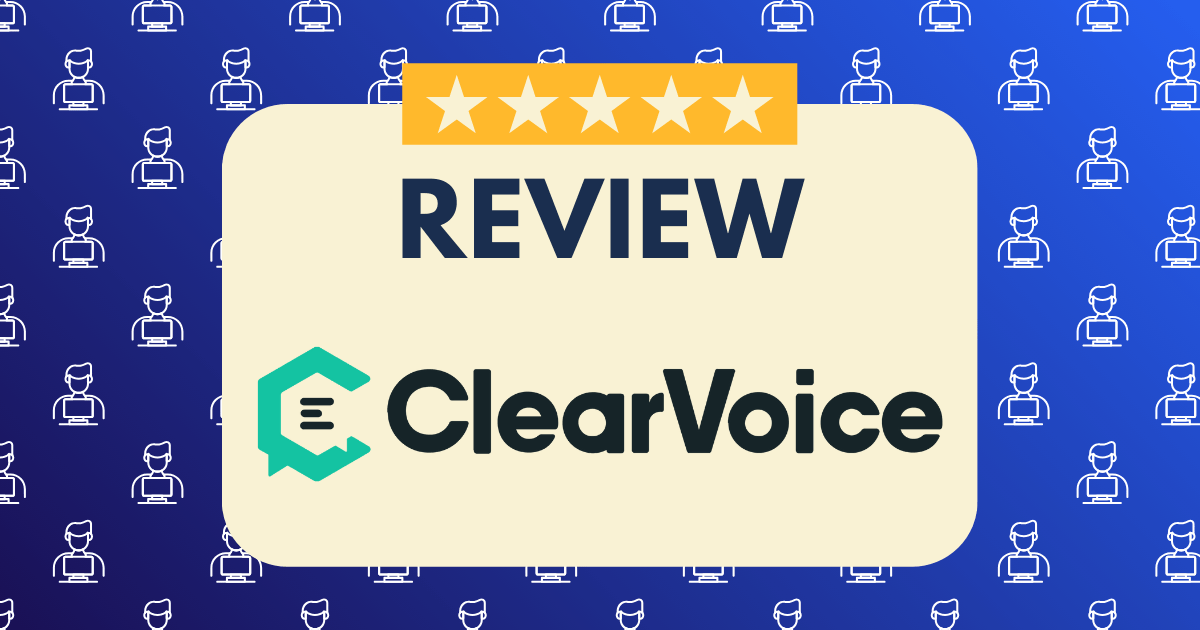Portfolio Hacks: Creating an Impressive Freelance Portfolio When You Have No Experience

The classic freelancing catch-22: you need a portfolio to get clients, but you need clients to build a portfolio. This seemingly impossible situation stops many aspiring freelancers before they even start. Yet the data is clear—freelancers with published portfolios are hired nine times more often than those without, regardless of experience level.
This comprehensive guide breaks down the psychological principles and practical strategies that enable you to build a compelling portfolio from scratch, even with zero professional experience. By understanding how clients evaluate portfolios and strategically creating high-impact showcase pieces, you can position yourself as a credible professional from day one.
The Psychology of Portfolio Evaluation: Understanding How Clients Think
Before diving into specific tactics, it’s essential to understand the psychological framework clients use when evaluating portfolios. Research from the Journal of Consumer Psychology reveals that hiring decisions are influenced by three primary factors:
1. Perceived Competence
Clients look for evidence that you can solve their specific problems. This is less about years of experience and more about demonstrated capability in relevant contexts.
Key Insight: Portfolio pieces that directly address common client challenges create stronger perceived competence than generic work samples.
2. Risk Assessment
Clients evaluate portfolios primarily as risk-mitigation tools. They’re asking: “Is hiring this person a safe decision?”
Key Insight: Portfolio elements that specifically reduce perceived risk (process documentation, problem-solving narratives, etc.) are more valuable than purely aesthetic showcases.
3. Cognitive Fluency
The ease with which clients can process and understand your work significantly impacts their evaluation. Complex or confusing presentations create cognitive friction that reduces perceived value.
Key Insight: Clear, structured portfolio presentations outperform more creative but harder-to-navigate formats, particularly for new freelancers.
Understanding these psychological principles allows you to strategically design a portfolio that addresses client concerns even without formal experience.
The Foundation: Five Types of Projects for Your Zero-Experience Portfolio
The cornerstone of your portfolio strategy is creating showcase pieces that demonstrate your capabilities without requiring previous clients. Here are five proven approaches:
1. The Reconstruction Project
This approach involves reimagining and improving existing work in your target field.
Implementation Strategy:
- Select 3-5 examples of suboptimal work in your industry (poorly designed websites, unclear writing, ineffective marketing materials)
- Completely rebuild each example with your improved approach
- Document your process, including the specific problems identified and your solutions
- Present as “case studies” with clear before/after comparisons
Example: For a web design portfolio, find local business websites with poor design, rebuild them completely, and showcase the improvements in usability, aesthetics, and functionality.
Psychological Advantage: This approach demonstrates both critical thinking and execution ability—two qualities clients value highly.
2. The Passion Project
Create comprehensive work for causes, interests, or fictional entities you care about.
Implementation Strategy:
- Identify 2-3 personal interests, hobbies, or causes you’re passionate about
- Develop professional-quality projects as if these were paying clients
- Apply the same standards and processes you would for professional work
- Document your strategic thinking and creative process
Example: A graphic designer might create a complete brand identity for their favorite local non-profit, including logo, style guide, and marketing materials.
Psychological Advantage: Passion projects often result in higher-quality work because of your genuine interest, and they demonstrate initiative and self-direction.
3. The Specialized Demonstration
Create focused pieces that showcase specific high-value skills in your domain.
Implementation Strategy:
- Identify 3-5 specialized skills highly valued in your field
- Create standalone demonstrations that isolate and highlight these skills
- Provide technical commentary explaining your approach
- Connect each demonstration to common client challenges
Example: A copywriter might create a series of email sequences demonstrating different persuasion techniques, each annotated with conversion principles applied.
Psychological Advantage: This approach positions you as thoughtfully analytical rather than simply executional, elevating your perceived expertise.
4. The Hypothetical Client Project
Develop complete projects for well-known brands or hypothetical clients in your target market.
Implementation Strategy:
- Select 2-3 recognizable brands or create composite client profiles
- Identify specific challenges or opportunities these clients might face
- Develop comprehensive solutions as if formally engaged
- Present with clear business objectives and strategic rationale
Example: A social media manager might create a complete campaign strategy for a popular brand, including content calendars, creative assets, and performance projections.
Important Disclaimer: Always clearly label these as speculative or concept projects to avoid misrepresentation.
Psychological Advantage: Using recognized brands creates cognitive association between your work and established entities, lending implicit credibility.
5. The Pro Bono Strategic Partnership
Offer your services free of charge to select organizations in exchange for portfolio pieces and testimonials.
Implementation Strategy:
- Identify 2-3 small businesses, startups, or non-profits aligned with your target market
- Approach with a specific, limited-scope project proposal
- Establish formal agreements including portfolio usage rights
- Deliver professional-quality work with regular client interaction
Example: A web developer might offer to build a landing page for a local business in exchange for a case study and testimonial.
Psychological Advantage: These projects provide authentic client interaction experience and testimonials—powerful social proof for prospective clients.
Portfolio Presentation: Psychological Frameworks for Maximum Impact
Creating strong portfolio pieces is only half the equation—how you present them dramatically impacts their perceived value. These presentation frameworks are designed to maximize the psychological impact of your work.
1. The Problem-Solution-Result Framework
Structure each portfolio piece as a clear narrative that emphasizes business impact.
Implementation Structure:
- Problem Statement: Clearly articulate the challenge or opportunity
- Strategic Approach: Explain your thinking and methodology
- Solution Details: Showcase the actual work with relevant visuals
- Results (actual or projected): Quantify the impact whenever possible
Psychological Impact: This framework shifts evaluation from subjective aesthetic judgment to objective problem-solving capability—exactly how clients assess value.
2. The Process Transparency Approach
Showcase your working methodology alongside finished products to demonstrate professionalism.
Implementation Structure:
- Brief Overview: Concise project summary
- Process Documentation: Step-by-step approach with visual evidence
- Decision Points: Key choices made and their rationale
- Refinement Stages: How the work evolved through iterations
- Final Deliverable: The completed project
Example Format: For a logo design project, include initial sketches, digital drafts, client feedback integration points, and the evolution to the final design.
Psychological Impact: Process documentation signals reliability and reduces perceived risk—critical factors for clients evaluating freelancers without established track records.
3. The Specialized Capability Cluster
Group portfolio pieces to highlight specific high-value capabilities rather than chronological or project-based organization.
Implementation Structure: Organize work into skill-based categories such as:
- Strategic Thinking: Projects showcasing analysis and planning
- Technical Execution: Work demonstrating specialized technical skills
- Creative Innovation: Examples of unique or innovative approaches
- Problem Solving: Cases where you overcame significant challenges
Example Format: A digital marketer might organize their portfolio into sections for “Conversion Rate Optimization,” “Email Marketing Automation,” and “Social Media Strategy” rather than by client or date.
Psychological Impact: This structure guides clients to evaluate you based on capabilities relevant to their needs rather than chronological experience.
Platform Strategy: Where to Host Your Portfolio
The platform you choose for your portfolio significantly impacts both client perception and your ability to showcase work effectively. Here’s a strategic evaluation of the primary options:
1. Dedicated Portfolio Websites
Platforms: Squarespace, Wix, WordPress
Advantages:
- Complete creative control
- Professional domain name
- Comprehensive analytics
- Integration with marketing tools
Best For: Freelancers in visually-oriented fields or those planning to build a comprehensive personal brand.
Strategic Approach: Invest in a custom domain name ($10-15 annually) and select a template specifically designed for your industry. Focus on mobile optimization, as 63% of portfolio views occur on mobile devices.
2. Specialized Industry Platforms
Platforms: Behance (design), GitHub (development), Contently (writing), Dribbble (design)
Advantages:
- Built-in community
- Industry-specific features
- Discoverability within your field
- Established credibility
Best For: Freelancers in fields with strong platform ecosystems who want to leverage existing networks.
Strategic Approach: Optimize your profile completely, including all available fields and tags. Engage actively with the community to build visibility before you need clients.
3. Professional Network Portfolios
Platforms: LinkedIn, Upwork, Fiverr
Advantages:
- Direct connection to job opportunities
- Built-in social proof mechanisms
- Low technical barrier to entry
- Free to use
Best For: Beginners looking for the fastest path to market or those focusing on platforms as their primary client source.
Strategic Approach: On LinkedIn, use the Featured section to highlight portfolio pieces directly on your profile. On freelance platforms, create service packages specifically aligned with your portfolio examples.
4. PDF Portfolios
Tools: Canva, Adobe InDesign
Advantages:
- Complete control over presentation
- No hosting costs
- Easy to update and version
- Direct sharing with potential clients
Best For: Freelancers in consulting, writing, or business services where visual browsing is less critical.
Strategic Approach: Design a visually consistent document with clear navigation, hyperlinks to any online examples, and contact information on every page.
Psychological Insight: The platform you choose sends implicit signals about your professionalism and technical comfort. Match your platform to both your industry expectations and target client preferences.
The Credibility Matrix: Building Trust Without Experience
Beyond portfolio pieces themselves, strategic elements can significantly enhance your perceived credibility despite limited experience:
1. Strategic Skill Certification
Targeted certifications can provide external validation of your capabilities.
Implementation Strategy:
- Identify 2-3 high-value skills in your domain
- Complete relevant certifications from recognized providers
- Integrate certification badges directly into your portfolio
- Connect certifications explicitly to client benefits
Example Resources:
- Google Digital Garage for marketing skills
- HubSpot Academy for marketing and sales
- LinkedIn Learning for various professional skills
- Industry-specific certifications relevant to your field
Psychological Impact: Third-party validation creates cognitive shortcuts for trust, partially offsetting limited experience.
2. Process Documentation
Detailed process documentation signals professionalism and reduces perceived risk.
Implementation Elements:
- Client Onboarding Guide: How you start new client relationships
- Project Methodology: Your systematic approach to work
- Communication Protocols: How you maintain client updates
- Quality Assurance Process: How you ensure deliverable quality
Example Format: Create a professional PDF guide for each element and feature samples in your portfolio.
Psychological Impact: Process transparency addresses the primary client concern about inexperienced freelancers: project management capability.
3. Strategic Testimonials
Even without client testimonials, you can leverage other credibility voices.
Implementation Approaches:
- Peer Endorsements: Testimonials from colleagues or classmates
- Instructor Feedback: Quotes from teachers or course instructors
- Professional Memberships: Industry associations or groups
- Publication Features: Guest posts, interviews, or features
Example Strategy: After completing educational courses, request specific, detailed feedback from instructors that you can quote in your portfolio.
Psychological Impact: Third-party perspectives reduce perceived risk by providing external validation of your capabilities.
4. Results-Focused Case Studies
Transform portfolio pieces into detailed case studies emphasizing outcomes.
Implementation Structure:
- Situation: The context and challenge
- Task: Your specific assignment or goal
- Action: Detailed approach and execution
- Result: Concrete outcomes (actual or projected)
Example Enhancement: Rather than simply showing a website design, create a comprehensive case study analyzing the business impact of your design decisions.
Psychological Impact: Results-oriented presentation shifts client evaluation from subjective quality assessment to objective value consideration.
Portfolio Specialization: The Focused Expertise Strategy
A common mistake among new freelancers is creating generalist portfolios that demonstrate breadth but not depth. Research from marketing psychology shows that perceived expertise is more valuable than perceived versatility, particularly for service providers.
The Three-Niche Strategy
Rather than presenting yourself as a generalist, develop portfolio pieces focused on three specific niches:
Implementation Approach:
- Identify three distinct but related specializations within your field
- Create 2-3 portfolio pieces for each specialization
- Present these as focused expertise areas rather than random samples
- Develop specific language and positioning for each niche
Example: A graphic designer might focus on:
- E-commerce brand identity
- Health and wellness packaging
- Technology startup marketing materials
Psychological Impact: Specialized positioning creates perceived expertise even without extensive experience, as clients evaluate you within a narrower context.
The Client-Specific Portfolio: Customization Strategy
The most sophisticated approach to portfolio presentation involves customizing what potential clients see based on their specific needs.
The Modular Portfolio System
Create a flexible portfolio system that can be quickly adapted for specific opportunities.
Implementation Strategy:
- Develop a comprehensive “master portfolio” with all your work
- Create templates for different client types or project categories
- For each serious prospect, quickly assemble a tailored selection
- Include a personalized cover page addressing their specific needs
Example Execution: When approaching a potential e-commerce client, compile only the retail and conversion-focused examples from your master portfolio, with a custom introduction highlighting relevant experience.
Technical Implementation: Use portfolio platforms with privacy or collection features (like Behance Collections or password-protected pages on your website) to create these custom views.
Psychological Impact: Customized portfolios demonstrate both attentiveness and relevant expertise, significantly increasing conversion rates from portfolio review to client conversation.
From Portfolio to Proposal: The Conversion Strategy
Your portfolio’s ultimate purpose is converting viewers into clients. These strategic elements bridge that gap:
1. The Next-Step Framework
Every portfolio should include clear guidance on how to proceed.
Implementation Elements:
- Service Clarity: Concise description of services offered
- Process Preview: Brief overview of your working process
- Contact Options: Multiple ways to reach you (form, email, scheduling link)
- Response Expectation: Clear timeframe for your reply
Psychological Impact: Clear next steps reduce cognitive friction at the critical decision point.
2. The Value Proposition Statement
Craft a compelling statement that connects your work to client outcomes.
Implementation Formula: “I help [specific client type] achieve [desirable outcome] through [your service], even if [common obstacle].”
Example: “I help e-commerce brands increase conversion rates through strategic website design, even if they’ve struggled with poor results from previous redesigns.”
Placement Strategy: Feature this statement prominently on your portfolio homepage and in your contact section.
Psychological Impact: A clear value proposition shifts client focus from your experience level to their desired outcomes.
Getting Your First Clients: Portfolio Distribution Strategy
Creating an impressive portfolio is only valuable if potential clients actually see it. These distribution strategies help get your work in front of the right audience:
1. The Strategic Networking Approach
Leverage existing connections to generate initial opportunities.
Implementation Steps:
- Create a list of 20-30 personal and professional connections
- Develop a concise portfolio announcement message
- Personally share your portfolio with specific commentary for each connection
- Request introductions to 1-2 people who might need your services
Psychological Insight: Personal connections dramatically increase portfolio review rates and create social obligation for thoughtful feedback.
2. The Community Contribution Strategy
Establish visibility by adding value in communities where potential clients gather.
Implementation Approach:
- Identify 3-5 online communities relevant to your target clients
- Consistently provide helpful, non-promotional contributions
- Add your portfolio link to your profile/signature
- Share relevant portfolio pieces only when directly relevant to discussions
Example Platforms:
- Industry-specific Facebook or LinkedIn groups
- Reddit communities related to your field
- Slack channels for your target industries
- Forums where your ideal clients seek advice
Psychological Impact: Demonstrating expertise through helpful contributions creates positive associations that increase portfolio credibility.
3. The Strategic Micro-Case Study
Create shareable portfolio highlights specifically designed for social platforms.
Implementation Format:
- Single-image carousel or swipe-through presentation
- Clear problem-solution-result structure
- Visual focus with minimal text
- Strong call-to-action to view full portfolio
Distribution Channels:
- LinkedIn posts (not just your profile)
- Instagram carousel posts
- Twitter thread with visuals
- Relevant industry hashtags
Example Structure: “Recently completed this [project type] for [client/concept]. The challenge was [problem]. Swipe to see the solution and results. Full case study in bio link.”
Psychological Advantage: Micro-case studies leverage the higher engagement of social platforms while driving interested prospects to your complete portfolio.
Continuous Improvement: The Portfolio Evolution Strategy
Your initial portfolio is just the starting point. This systematic approach ensures continuous improvement:
1. The Replacement Strategy
Implement a “one in, one out” policy to consistently elevate your portfolio quality.
Implementation Process:
- Identify your weakest portfolio piece
- Create a new project specifically designed to replace it
- Apply learnings and feedback from previous work
- Remove the weaker piece once the replacement is complete
Execution Timeline: Commit to replacing your weakest portfolio piece every 60-90 days during your first year.
Psychological Benefit: This approach maintains a manageable portfolio size while consistently increasing overall quality.
2. The Feedback Integration Loop
Systematically collect and apply feedback to refine your portfolio.
Implementation System:
- Create a simple feedback form for portfolio reviewers
- Request specific feedback from industry peers monthly
- Track common questions or concerns from potential clients
- Implement improvements based on patterns identified
Example Questions:
- Which portfolio piece was most impressive to you and why?
- Was there anything confusing or unclear about my work?
- What additional information would help you evaluate my capabilities?
- Which piece seemed least relevant or compelling?
Psychological Insight: Regular external feedback counteracts the cognitive biases that can blind you to weaknesses in your own presentation.
3. The Strategic Gap Analysis
Periodically assess your portfolio against market demands to identify improvement opportunities.
Implementation Process:
- Review 20-30 job postings or client requests in your target market
- Identify commonly requested skills or deliverables
- Assess your portfolio’s demonstration of these elements
- Prioritize new portfolio pieces that address identified gaps
Execution Frequency: Conduct this analysis quarterly to ensure your portfolio remains aligned with market needs.
Strategic Advantage: This approach ensures your portfolio evolves with market demands rather than just your personal interests.
Conclusion: From Blank Slate to Booked Client Calendar
The journey from no experience to an impressive portfolio is not about waiting for opportunities but strategically creating them. By understanding the psychology behind portfolio evaluation and implementing the frameworks outlined in this guide, you can build a compelling professional presentation that converts viewers into clients—even without formal experience.
Remember that your initial portfolio is not a final product but the first iteration of an evolving professional presentation. Each project you complete, whether for clients or your portfolio, provides an opportunity to refine your skills and enhance your showcase.
The most successful freelancers recognize that a portfolio is more than a collection of work samples—it’s a strategic business tool designed to address client concerns, demonstrate relevant capabilities, and facilitate hiring decisions. By approaching your portfolio with this mindset, you transform the apparent obstacle of limited experience into an opportunity to demonstrate your strategic thinking and problem-solving abilities—qualities that ultimately matter more to clients than years of experience.
Your path to freelance success begins not with waiting for the perfect client, but with creating the perfect demonstration of what you can achieve for them. Start building today.







